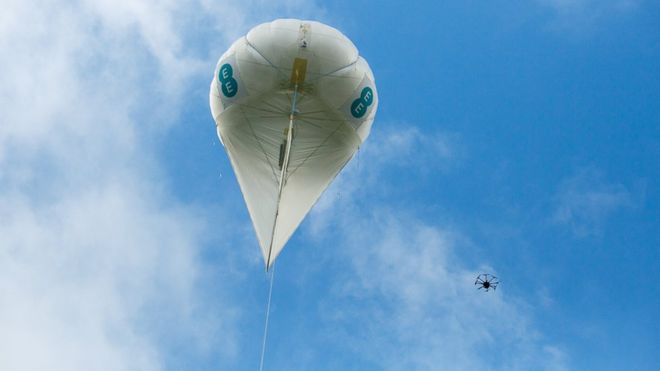Mobile phone provider EE has demonstrated helium balloons and drones that could provide 4G mobile coverage following damage to existing infrastructure.
The devices are fitted with small mobile sites that include a base station and an antenna.
They could also be used to connect remote parts of the UK where coverage is thin.
EE said it planned to deploy such a network in a UK rural area this year.
The drones can stay airborne for up to an hour at a time and the “helikite” balloons for several weeks as they have a tethered power source.
The drone was designed to give short-term targeted coverage to aid search and rescue situations, EE said.
“Innovation is essential for us to go further than we’ve ever gone, and deliver a network that’s more reliable than ever before,” said EE chief executive Marc Allera.
“Rural parts of the UK provide more challenges to mobile coverage than anywhere else, so we have to work harder there – developing these technologies will ultimately help our customers, even in the most hard to reach areas.”
It was the first time this had been tried out in the UK, said Kester Mann, analyst at CCS Insight.
“Everyone immediately thinks of disruptive players like Facebook and Google when it come to things like balloon-based networks. The traditional networks need to step up so they don’t get left behind,” he told the BBC.
Google is developing a network of huge balloons to provide connectivity to rural areas around the world, known as Project Loon.
Last month the tech giant confirmed it had closed its internet drone project, Titan, which was designed to bring the internet to remote rural areas.
Facebook’s Project Aquila involves building solar-powered aircraft which will fly for months at a time above remote places, beaming down an internet connection.
